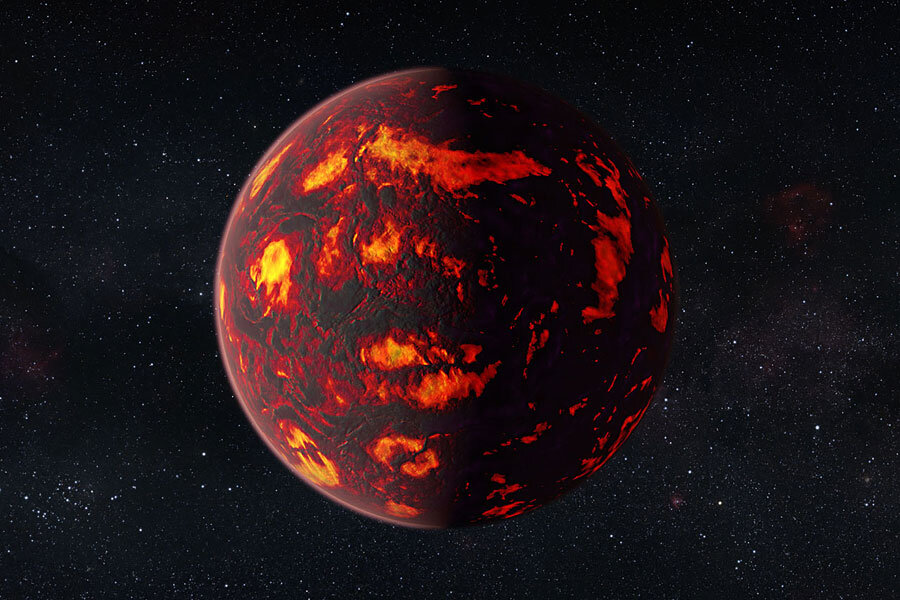What's in a 'super-Earth' atmosphere? Scientists detect familiar gases.
Loading...
Astronomers have taken a peek into the atmosphere of a "super-Earth" for the first time.
Their analysis reveals that 55 Cancri e, an exoplanet some 40 light years from Earth, has an atmosphere made up of hydrogen and helium gases. But they found no signs of water vapor.
"This result gives a first insight into the atmosphere of a super-Earth. We now have clues as to what the planet is currently like and how it might have formed and evolved, and this has important implications for 55 Cancri e and other super-Earths," Giovanna Tinetti, one of the study authors, said in a news release.
Super-Earths are exoplanets named for having a mass between that of the Earth and our solar system's gas giants, but closer to that of the Earth. This class of planet is thought to be the most common in our galaxy.
The Wide Field Camera 3, on board the Hubble Space Telescope, picked up hints of hydrogen cyanide in the atmosphere too. Hydrogen cyanide is a marker for carbon-rich atmospheres.
"Such an amount of hydrogen cyanide would indicate an atmosphere with a very high ratio of carbon to oxygen," said Olivia Venot, another author of the study.
"This result suggests this super-Earth is a carbon-rich environment even more exotic than previously thought," the researchers write in their paper. But much more research needs to be done to confirm the presence of hydrogen cyanide.
Some astronomers have already surmised that the interior of 55 Cancri e is carbon-rich based on its mass and radius.
But don't pack your bags just yet.
Not only is this just a hint of a potential marker for a carbon-rich atmosphere, 55 Cancri e might not be the most inviting exoplanet. Unlike other super-Earths, this one orbits remarkably close to its parent star, 55 Cancri. At this proximity, a solar year lasts just 18 hours and surface temperatures regularly reach 2000 degrees Celsius (3632 degrees Fahrenheit).
Plus, "Hydrogen cyanide, or prussic acid, is highly poisonous," Jonathan Tennyson, another member of the team, said. "So it is perhaps not a planet I would like to live on!"








